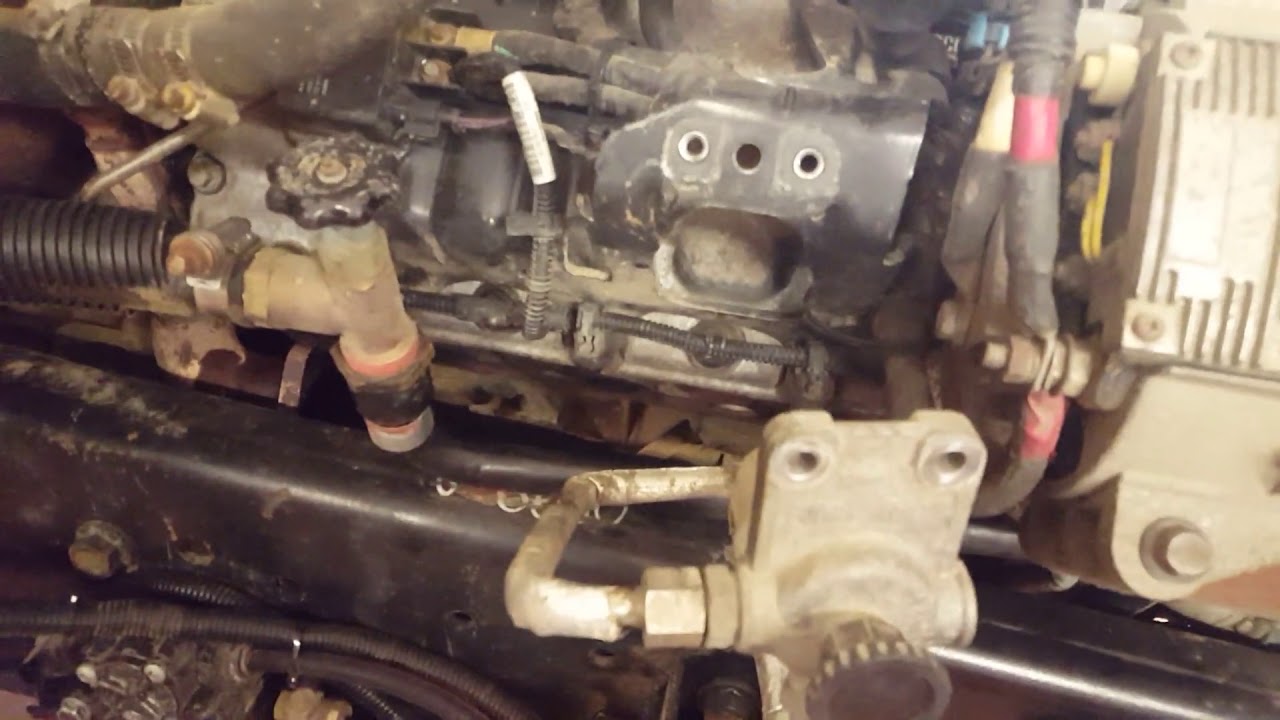The video points out a couple of easy ways to get to the engine by removing the wheel and fender. This is a quick way to gain access to the exhaust manifold which had leaking gaskets. The vehicle inspection rules on a school bus states that any exhaust leaks have to be repaired before going back into service. The fumes can funnel into the cab easily and thankfully the smell will be the tell tale clue that there is a problem.
We don’t want to get to that point so during our inspections we check all of the exhaust connections for black soot trails. In this case there were also broken exhaust manifold fasteners which did not help the situation. We will do both sides and get this bus back to proper running condition. It’s a good thing to find these problems before the government vehicle inspectors just so they know our shop is not letting anything go on the mechanical side.
MaxxForce 7 Specifications
The MaxxForce 7 is a V-8 and has 6.4 Liters (389 cu. in.) displacement. The horsepower rating is between 220-300 HP. Our engines are at the low end of the scale because of the application. Peak torque is 560 – 660 lb. ft. Fuel injection is a direct high pressure common rail system that gets up to 28,000 psi fuel pressure. The high pressure injection cuts down on emissions and is supposed to create smoother operation and add efficiency. The dual turbochargers work together with the smaller turbo providing a better launch at low speeds and the larger turbo kicking in with high speed torque and hill climbing.
MaxxForce 7 Servicing
When it comes to changing engine oil / filter our maintenance plan is very close to the factory recommendation of 10,000 miles or (16,100 KM). We change fuel filters during the oil change which is early. The OEM recommends fuel filter service every 30,000 miles (48,280 KM). The main reason we do fuel filters with the oil change is to stay away from 2 different intervals of service. Everything gets done at the same time and we don’t run into performance problems.
No valve lash is required which saves a lot of maintenance time. With coolant we check the additive levels every 5,000 KM service. Replacement is recommended every 5 years or 300,000 miles. We would do this every 2 years just to stay ahead of coolant break down. The engine crankcase breather in our plan is replaced yearly compared to OEM 60,000 miles (96,561 KM). It’s extra expense but running a fleet we have to stay ahead of the maintenance because when you get behind you start getting problems with restricted fuel filters or contaminated oil etc.
We run an oil analysis program as well which is an excellent method to stay on top of problems before they develop into a big one. The reports have come back with an alert of coolant in the oil which typically is a failed EGR cooler. This goes back to the coolant testing and keeping the Nitrite additive levels up. Low levels of additives in the coolant is the main reason cooling system components fail. A simple test strip every service will tell you if you need to do anything with the coolant.







